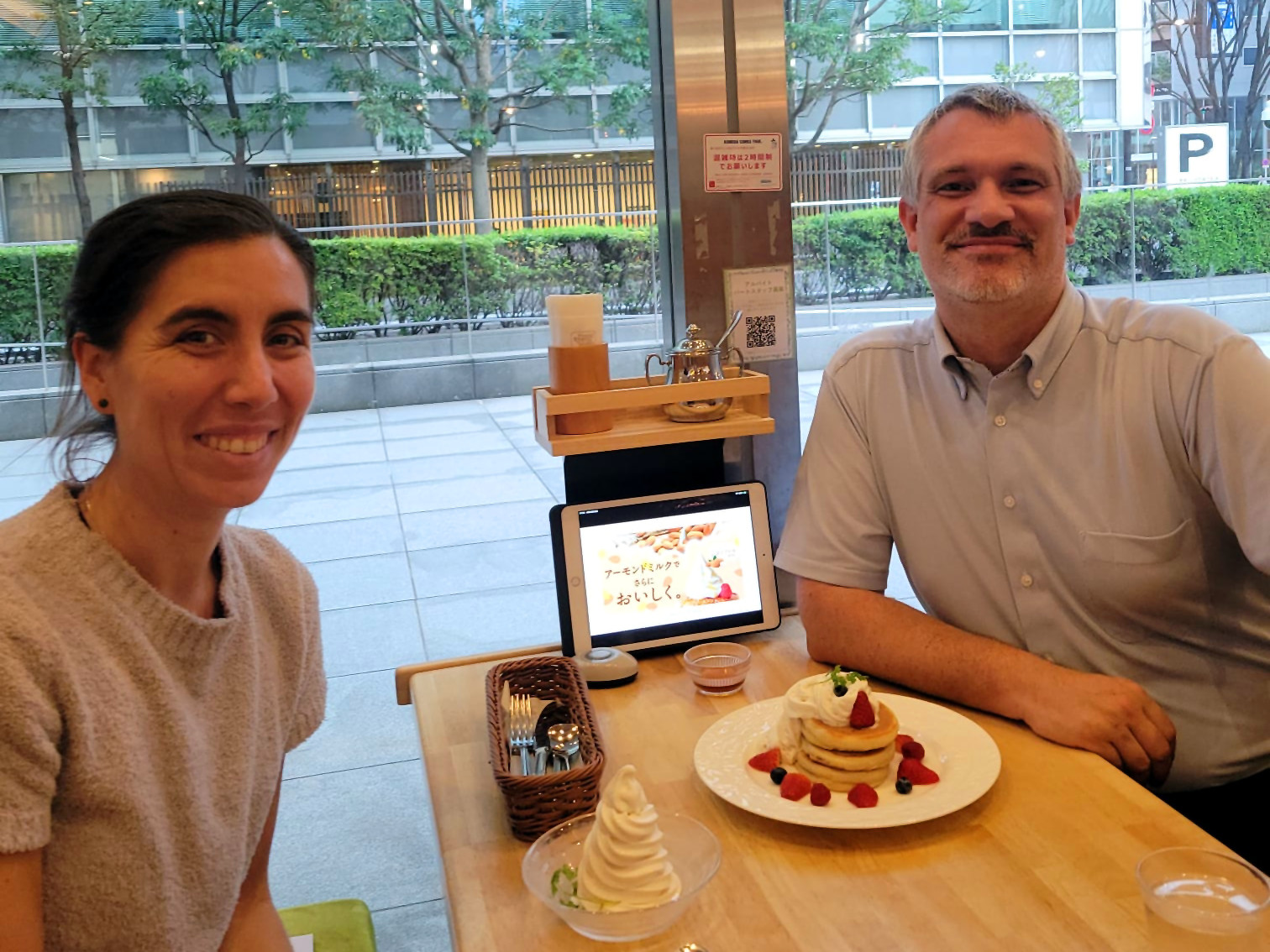In Tokyo, I accompanied Canadian journalist Carla Bragagnini covering crafts in Asia, introducing her to a 435 y.o. shinise business, a World Expo award winner, Purveyors to the Imperial Household, a Hello Kitty partner, an antenna shop with vegan certifications… blessed with a blue sky and rows of cherry blossoms. These sustainable, resilient and surprising businesses with products made in Japan perfectly illustrate why the World Economic Forum ranked Japan №2 worldwide for cultural resources. Whenever necessary, I interpreted between English and Japanese.
Ibasen
Founded in 1590 (277 years before Canada!), the fan maker Ibasen is the oldest business that we visited today. It is accessible to diverse customers, from cheap everyday life fans to luxury products like a white cypress fan costing 286,000 yen (CA$2,730 = €1,760). The fans with red seals are handmade; the others are prints. Finally, two fans stood out, inspired by Claude Monet’s painting “La Japonaise”.
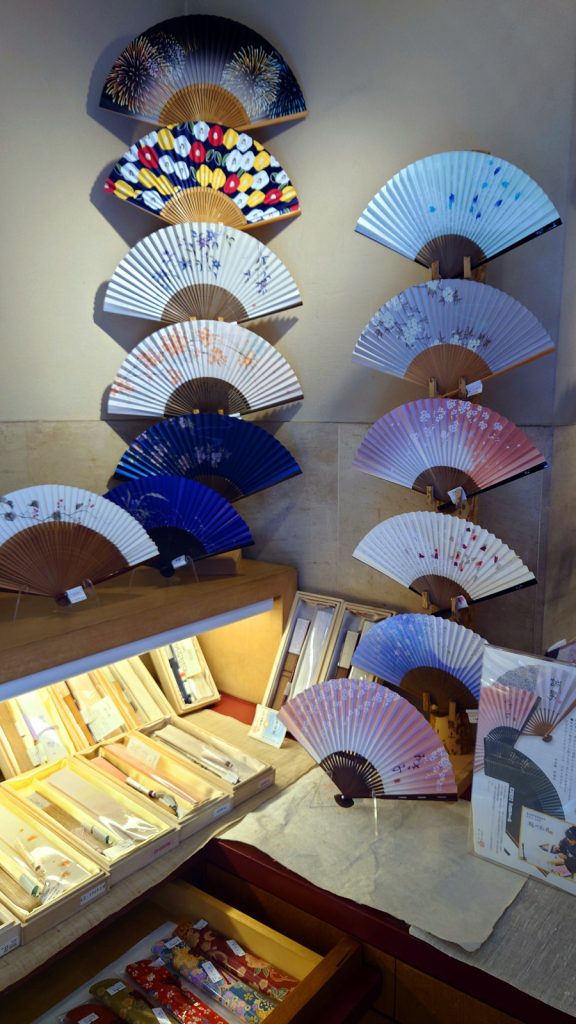
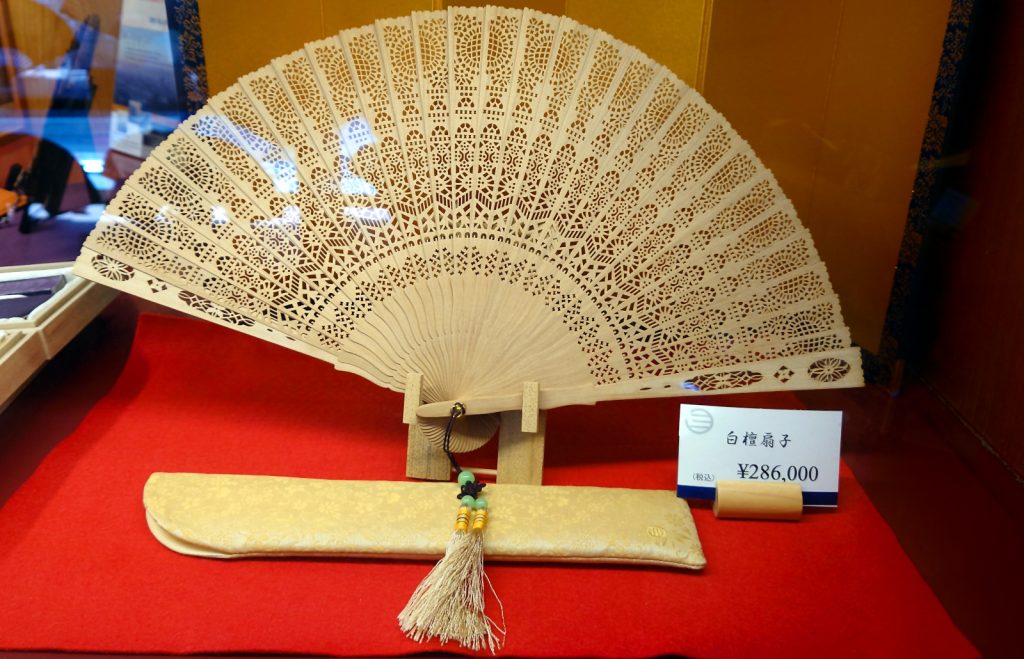
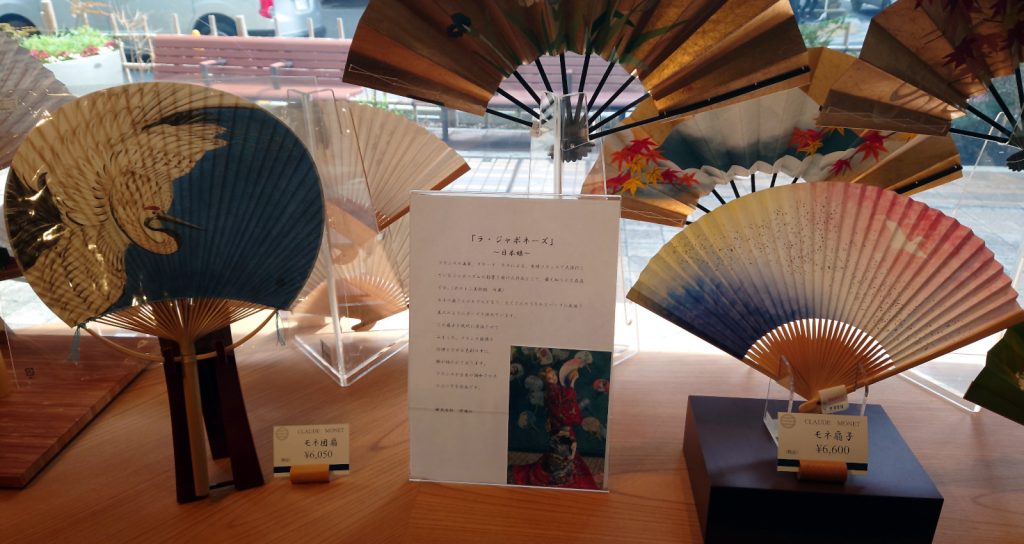
Koransha
We also visited the Tokyo showroom of Koransha, Arita ceramics maker founded in 1689, Purveyor to the Imperial Household, recipient of gold awards at several World Expos since 1875, best new product award “Tabletop + Gourmet Housewares” at NY NOW in 2019… All made at its factories, the ceramics are typically either completely white or mixes of red, blue, gold, and platinum.
Miyamoto Shoko
My favourite was Miyamoto Shoko, silver business founded in 1880, Purveyor to the Imperial Household, and maker of gifts that sealed the Anglo-Japanese Alliance 1902 treaty! Popular products with reasonable prices include necklaces and wagashi knives. Unique products include luxury sake cups handmade by a ningen-kokuho “living national treasure”…
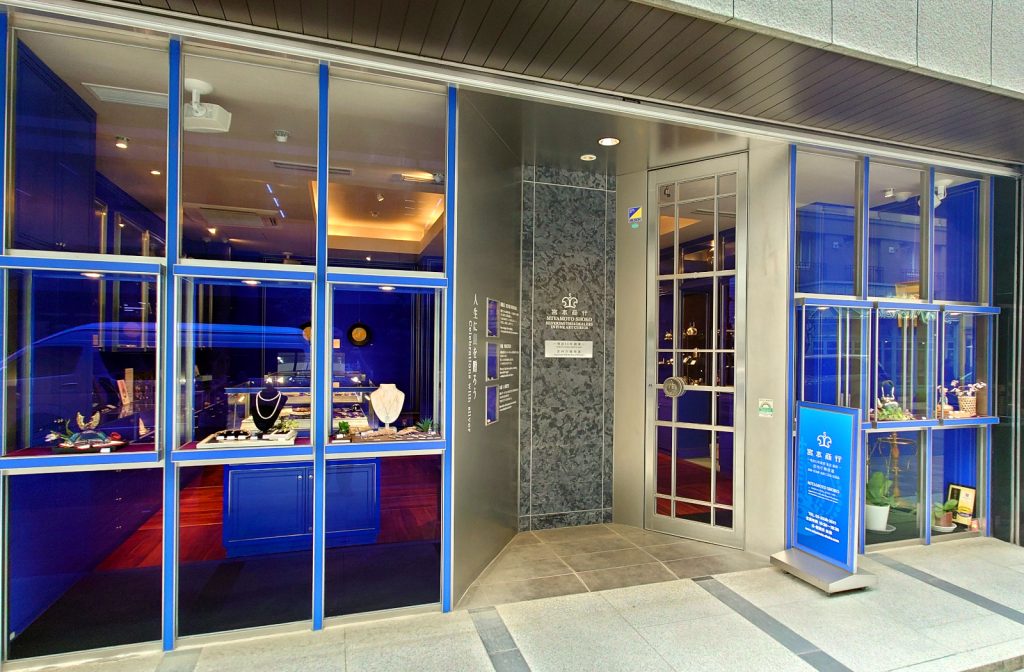
Yamamoto-noriten
About Japanese food rather than Japanese crafts, Yamamoto-noriten demonstrates that tradition is compatible with modernity & innovation. Founded in 1849, it sells healthy nori seaweed from plain snacks to combos with wasabi or brown rice. Thanks to its Hello Kitty partnership, some products particularly attract young Japanese as well as foreign tourists of all ages. In my eyes though, the most remarkable is that NASA gave Yamamoto-noriten a certificate of appreciation due to its contribution to the food system of the ISS (space food for the international space station)!
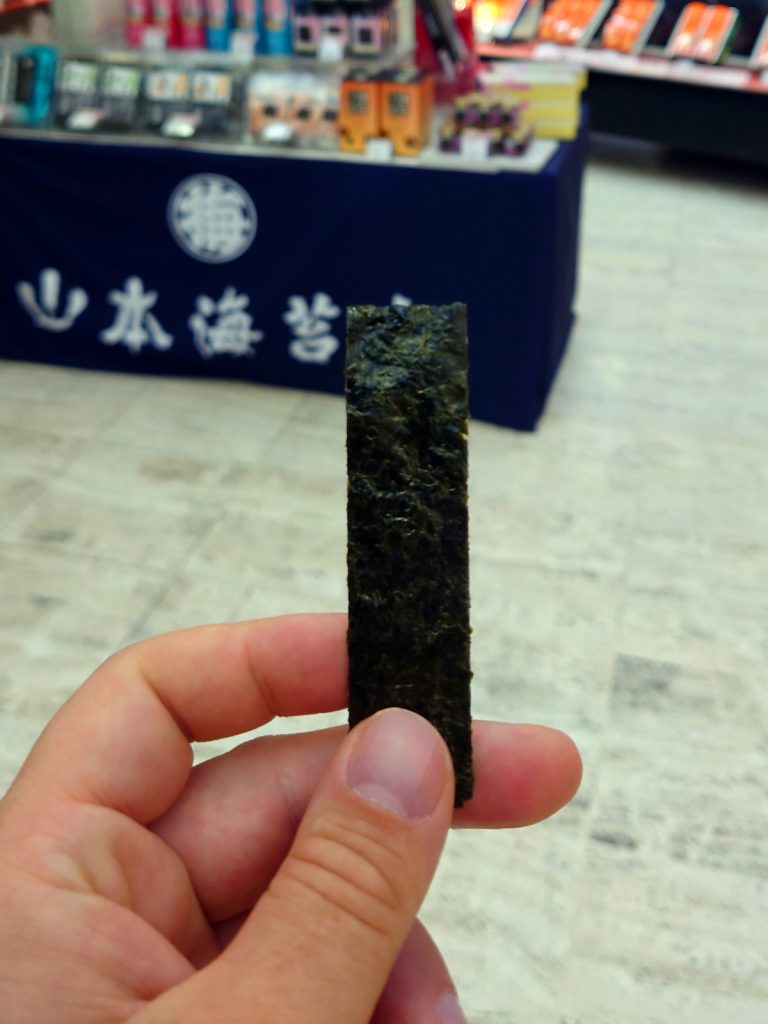
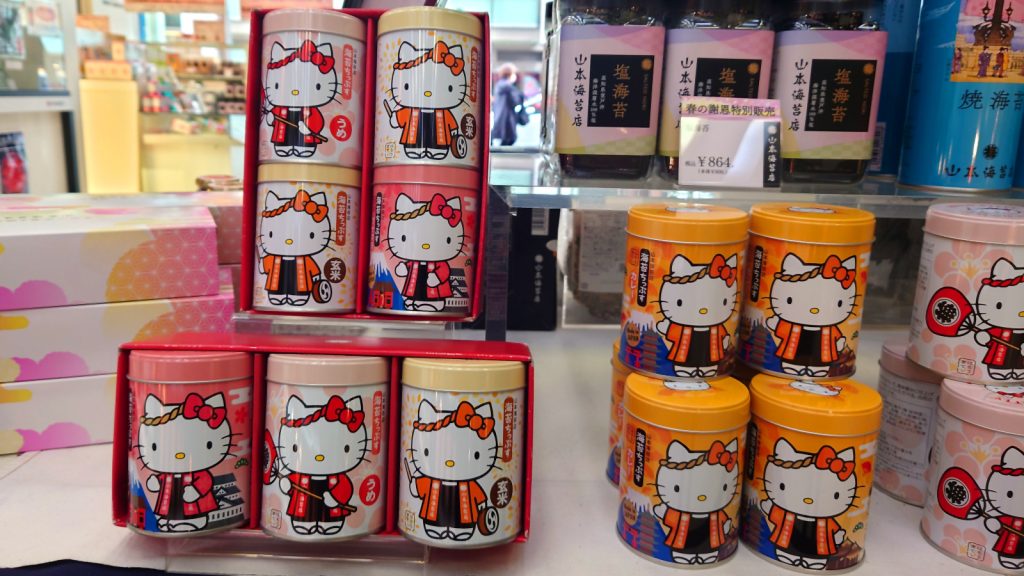
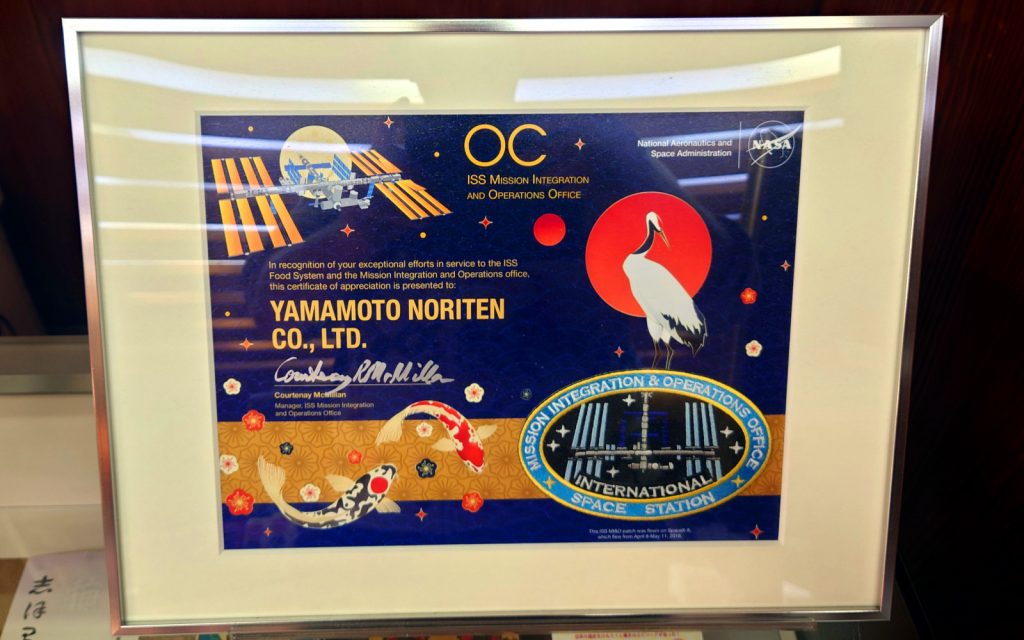
Ozu-washi
Founded in 1653, the papermaker Ozu-washi welcomes customers and visitors on 3 floors with a shop, gallery, museum, and studio (reserve beforehand if you want to experience the paper-making activity). Looking for innovation, I bought chemical-free lens wipes made of microfibre non-woven fabric for my smartphone & computer.
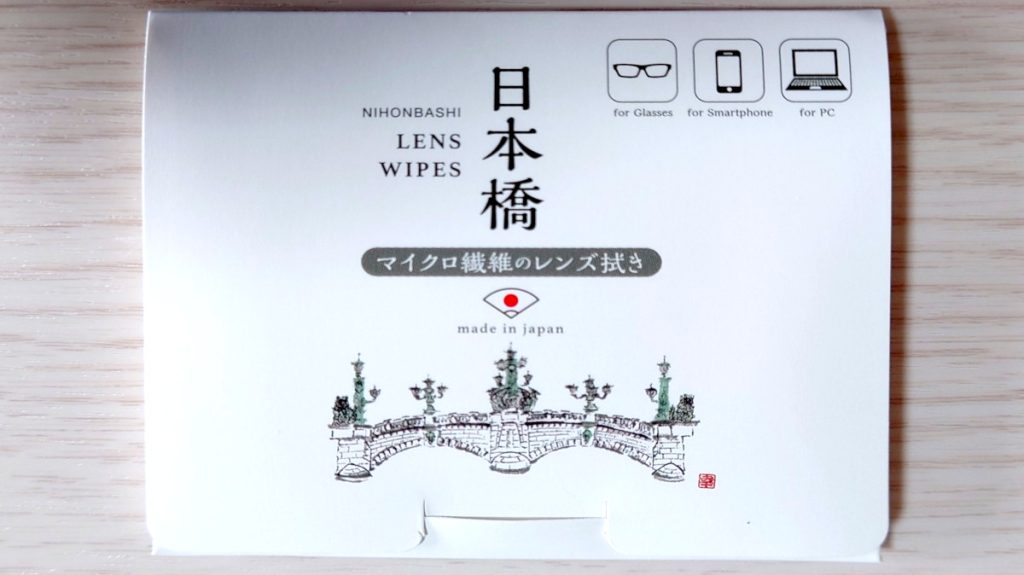
Yaesu Ishikawa Terrace
I made sure to introduce the Canadian journalist to so-called “antenna shops”. Regional specialty store of Ishikawa prefecture, Yaesu Ishikawa Terrace featured golden bags, golden facial masks, Wajima lacquerware, nihonshu… Looking around, I was pleasantly surprised to discover salad dressings certified vegan so I bought the 3: tomato, carrot, and komatsuna (Japanese mustard spinach) 🌿
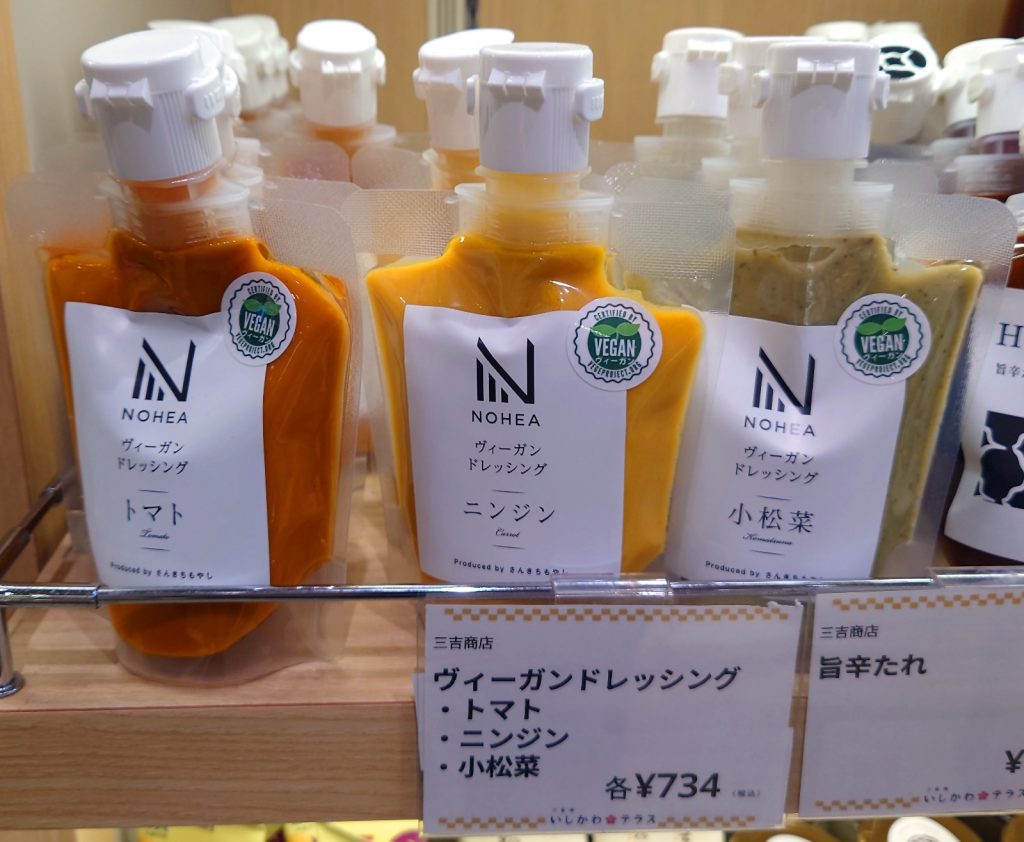
Beyond
In Tokyo Ginza/Nihombashi area all along, we lunched vegan at 2foods Ginza Loft. While Carla Bragagnini savoured omurice (“omelette rice” famous Japanese food), I tried for the first time vegan mentai (spicy fish eggs) part of the spring set: mentai teriyaki burger + baked potatoes with mentai mayo + strawberry matcha latte. I was impressed by the fascinating match in terms of visual aspect, texture, and taste.
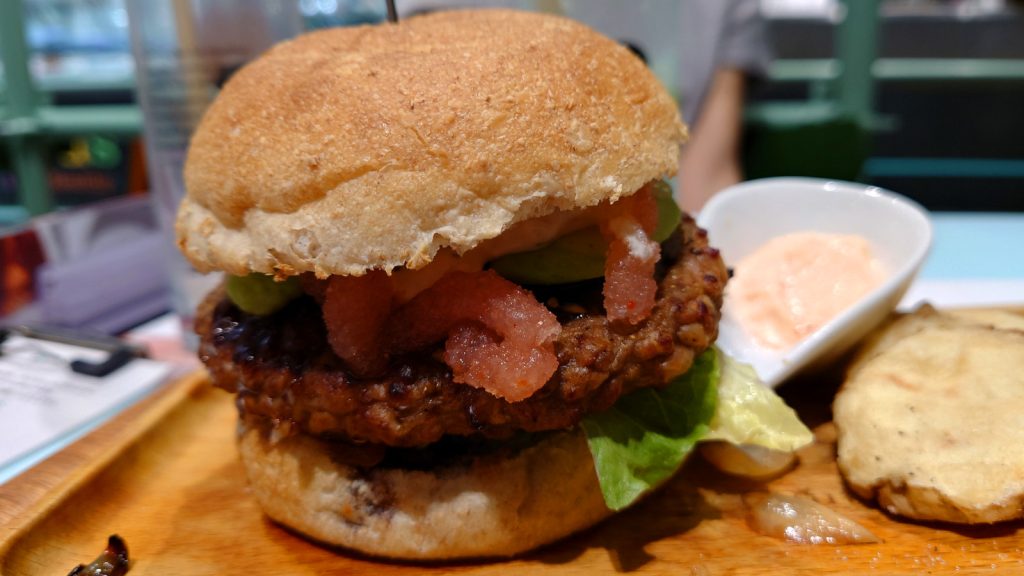
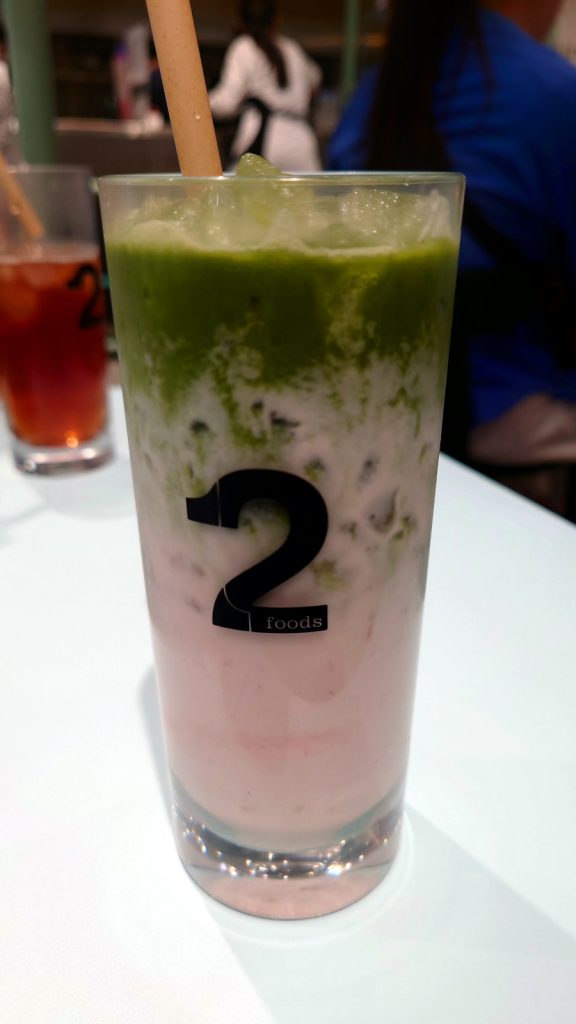
Finally, we rested/chatted with ice cream and fruits pancakes at Komeda Is Higashi Ginza vegan café.

May Carla write great news & travel articles about Japan and Asia beyond! If you visit Japan to write or make a documentary about it, feel free to contact me for information & contacts.
Comments & questions possible in the dedicated Bluesky thread.
